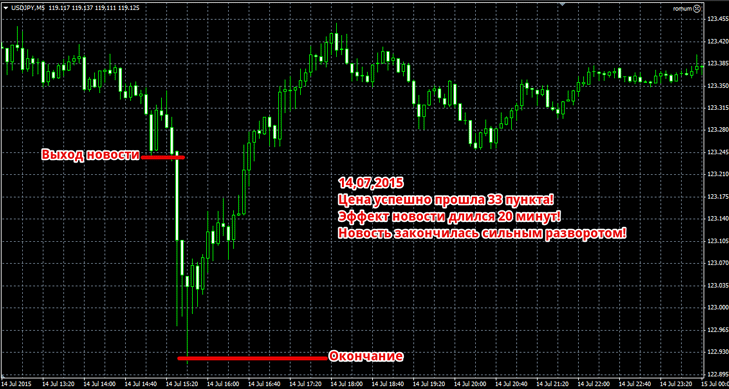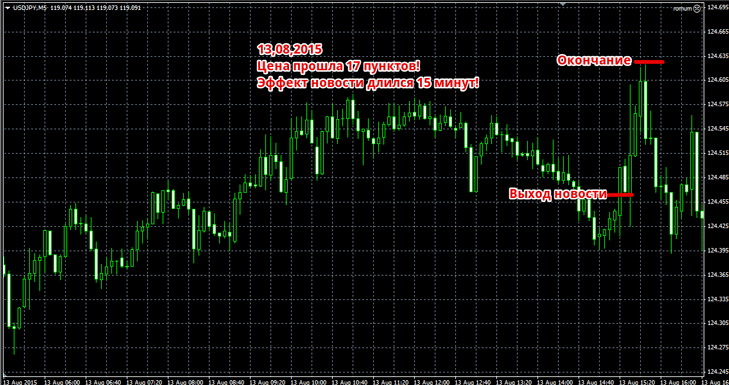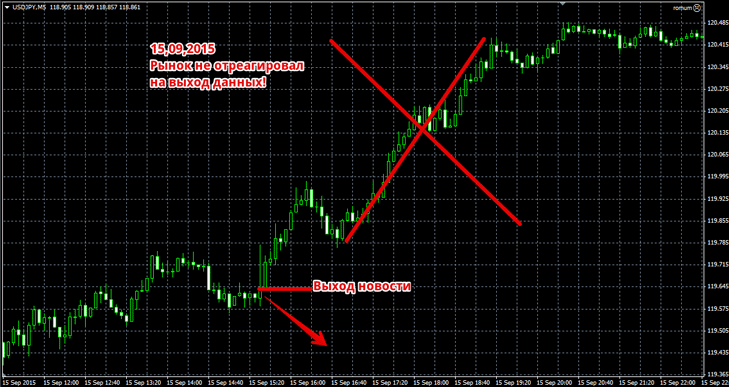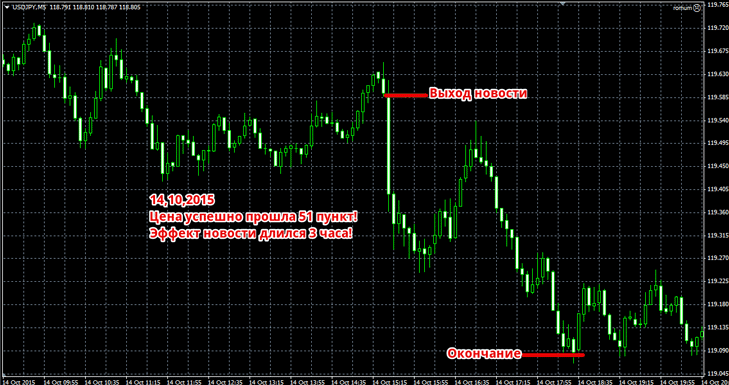US Retail Sales Index and USD/JPY
The impact of growing retail sales on the stability and prosperity of any country's economy is obvious. Without having any economic education, you can easily build a logical chain that directly traces the relationship between the growth of retail sales and the development of the country’s economy.
is obvious. Without having any economic education, you can easily build a logical chain that directly traces the relationship between the growth of retail sales and the development of the country’s economy.
When you see data on retail sales, you should immediately understand that you are indirectly analyzing consumer spending, production and, oddly enough, employment.
All three of the above criteria, one way or another, are included in the basic retail sales index, since with the growth of retail sales we can observe an increase in jobs, expansion of production and small businesses, and we also track how much richer the citizens of the country have become.
After all, you must admit that a poor state with low salaries simply cannot have a large volume of retail sales, since people simply do not have the means to make purchases.
The US Core Retail Sales Index is released on a monthly basis and includes data collected on the volume of goods sold by retailers, which are selected based on type and size, so this figure includes sales from both large retailers and small stores.
Thanks to this indicator, you can easily track the dynamics of the US economy. However, it is worth knowing that this index does not include data on the volume of retail sales of cars, since their prices are very dynamic, and this may affect the distortion of the data.
The core US retail sales index is believed to have a strong influence on the dollar, so traders regularly monitor the release of monthly reports. The principle of trading this news is very simple. You can find out when the next publication is published in the economic calendar .
If you observe, a decrease in retail sales volume is a signal of a deterioration in the US economy, which leads to a fall in the USD, an increase in volume indicates an improvement in the situation in the economy, which leads to a rise in the USD. This situation is observed in almost any currency pair with the dollar, but traders prefer to work with USD/JPY, since Japan is the largest exporter of goods to the United States.
However, behind the simple interpretation of the news lies the complexity of its application in trading, since no one can say how long the price moves after the publication of the data and how long the market storms. Therefore, I propose to consider the four latest publications and calculate the market reaction on the USD/JPY currency pair.
On July 14, 2015, there was a strong decline in the core retail trade index compared to the previous month. Analysts predicted a drop in volume to 0.5 percent compared to last month, but no one could have imagined that in fact we would get -0.1 percent.
A strong decline in retail sales indicates a deterioration in the US economy, so the chart of the USD/JPY currency pair should go rapidly south. We see the real reaction to deterioration in the picture below:

Despite the strong bad data, the price was only able to move 33 points, after which a strong reversal followed, which returned the market to its starting point. The market reacted extremely emotionally to the news, so we were able to observe its effect for only 20 minutes, and the entire main movement occurred in the first 10 minutes.
On August 13, 2015, almost all traders faced a difficult situation. The fact is that the actual data released were completely identical to those predicted by analysts and completely coincided with the publication for last month, which amounted to 0.4 percent.
In such a situation, the price most often goes in the direction of the main trend, therefore, since the trend at that time was bullish, we can safely assume that the chart of the USD/JPY currency pair will go up. We see the real price reaction to the news release in the picture below:

As in the previous example, we are faced with a situation where the market quickly reacts to the news, but it is stormed for an extremely short time, and in our case only 15 minutes. During this time, the price successfully passed 17 points, after which the price sharply rolled back to its original positions and entered a wide flat pattern. This is a typical reaction to confusion.
On September 15, 2015, data released indicated a significant decrease in retail sales, and the data was 0.1 percent versus 0.6 percent in the previous month. Based on the logic, one can conclude that things have significantly deteriorated in the US economy, so one must expect a real fall in the chart of the USD/JPY currency pair. How the news worked can be seen in the picture below:

In the picture above you can see a classic example of the market ignoring the news. Not only did the market simply not react, but the price also formed a new micro trend. This is a typical situation when the significance of the news is simply exaggerated.
On October 14, 2015, another negative data was published, which indicates a decrease in retail trade volume and amounted to -0.3 percent versus -0.1 percent. It is quite expected that due to the weakening of the USD, the chart of the USD/JPY currency pair should rapidly go down. The actual reaction to the decline in retail trade is shown in the picture below:

The market reacted quite strongly to the worsening economy, so you can see a sharp drop in the chart by 51 points. The price passed half of its movement in 3 candles, after which it was possible to observe braking, a rollback and a resumption of movement towards the news. The market was stormy for 3 hours.
Summarizing the results of the analysis using historical data, we can confidently say that the significance of the news for the Forex market is slightly exaggerated, so when trading you should not expect trend reversals or rapid growth and fall of charts by 100 or more points.
The news can be classified as high-speed, because in the first 15 minutes the price goes through almost the entire movement, after which, as a rule, a rollback and a return to the original positions. From a mathematical point of view, if you set a goal of 17 points and limited the risks to the same size, in the end you would earn: 17 + 17 + 17-17 = 34 points.
